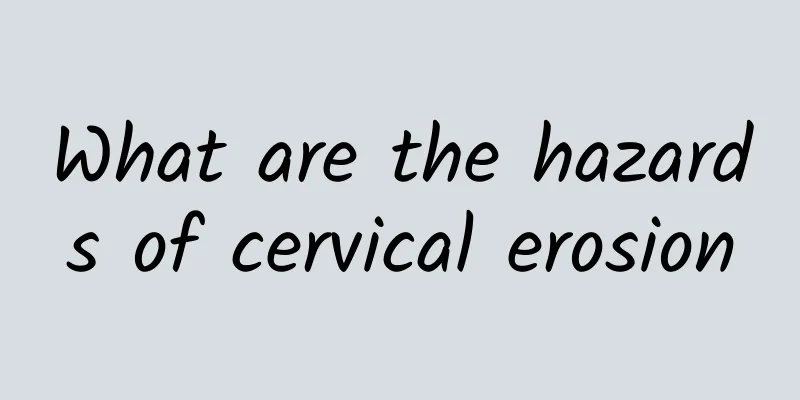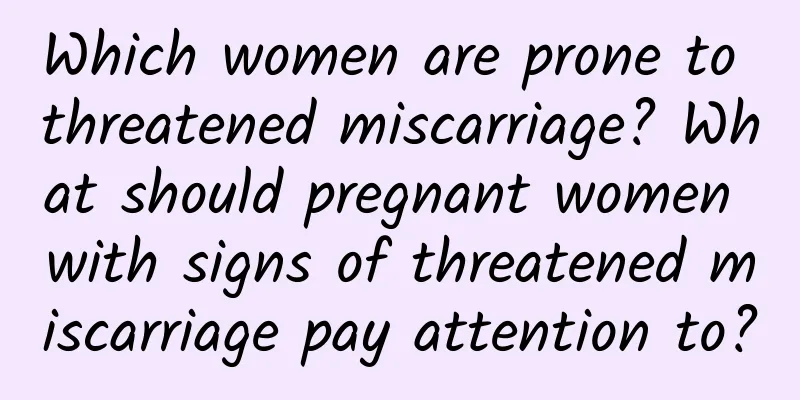Patients with dysfunctional uterine bleeding should undergo a comprehensive physical examination

|
Patients with functional uterine bleeding need timely treatment and a comprehensive physical examination before treatment to further clarify the cause. 1. Observe the patient's development and nutritional status to see if there is any sign of anemia, whether there is yellowing of the skin and mucous membranes, bleeding spots, hemorrhagic purpura, etc., and the blood pressure and pulse. 2. Gynecological examination: Those with vaginal bleeding should undergo disinfection examination, and unmarried women should undergo rectal examination. Care should be taken to exclude bleeding related to pregnancy, as well as bleeding caused by inflammation, tumors, etc. 3. Laboratory tests: routine blood tests, platelet count, bleeding and clotting time, reticulocyte count, liver function test, urine pregnancy test if necessary, and blood human chorionic gonadotropin. 4. Basal body temperature measurement to understand whether ovulation and corpus luteum function occur; cervical mucus crystals and vaginal exfoliated cells examination to understand estrogen levels and whether there is any progesterone effect; blood estrogen, progesterone and gonadotropin levels; thyroid function test; 5. Diagnostic curettage: Diagnostic curettage is recommended for patients with heavy bleeding, ineffective conservative treatment, or inability to exclude endometrial lesions. Segmental diagnostic curettage should be performed during the operation, paying attention to the size and shape of the uterine cavity, whether the uterine wall is smooth, and the nature of the scraped material. The curettage should be comprehensive, and the bilateral uterine horns should not be missed. If necessary, the operation can be performed under the guidance of hysteroscopy. In order to understand whether there is ovulation, corpus luteum function, and to exclude endometrial tuberculosis, curettage can be performed within 12-24 hours of menstruation; if the endometrium is suspected of irregular desquamation and incomplete corpus luteum atrophy, curettage can be performed on the fifth day of menstruation; for patients with irregular bleeding or prolonged bleeding, curettage can be performed at any time while taking anti-infection measures. 6. Hysteroscopic examination: It can detect the presence of polyps, small submucosal fibroids, etc. in the uterine cavity. |
<<: Primary amenorrhea examination items
>>: Typical symptoms of patients with atrophic vulvar leukoplakia at various stages
Recommend
What should I do if I have multiple uterine fibroids? What are the symptoms of multiple uterine fibroids?
Many women are afraid of uterine fibroids, especi...
Causes of uterine fibroids: Can lifestyle disorders also lead to uterine fibroids?
According to the survey, the number of patients w...
What should I avoid eating when I have uterine fibroids? What should I avoid eating when I have uterine fibroids?
What should I avoid eating when I have uterine fi...
What should you pay attention to when you get pregnant again after a miscarriage? Be sure to pay attention to these 3 points
If a woman has had a miscarriage before, she need...
Stay away from morbid obesity! Doctor: Control your body position to avoid gaining weight again
Obesity is the public enemy. For patients with mo...
Pay attention to whether cervical hypertrophy will occur after pelvic congestion
Mycoplasma, chlamydia, and bacteria can all lead ...
Uterine prolapse and weakened pelvic floor muscles... 3 Kegel exercises to strengthen
Don’t underestimate the role of your pelvic floor...
How to treat severe dysmenorrhea, is medication or surgery better?
If you suffer from severe dysmenorrhea, you can c...
Is obesity caused by intestinal bacteria? Weight loss doctor: Do this to get back to slim shape~
When it comes to maintaining good intestinal bact...
Delay cell aging and cultivate high-intensity exercise habits
If you want to keep your body active and healthy,...
Afraid of obesity, reject fat and dare not eat oil? Mediterranean diet with olive oil can fight inflammation and prevent cardiovascular disease
For those who are worried about gaining weight, t...
Experts introduce the symptoms of hyperplastic vulvar leukoplakia
Hyperplastic vulvar leukoplakia is a common gynec...
Does ovarian cyst need surgery? What should I pay attention to after surgery?
Does ovarian cyst require surgery? What should I ...
Let's listen to the experts introduce the types of dysmenorrhea
Dysmenorrhea is generally divided into primary dy...
Ectopic pregnancy patients should keep in mind the dietary taboos
Patients with ectopic pregnancy should pay specia...









